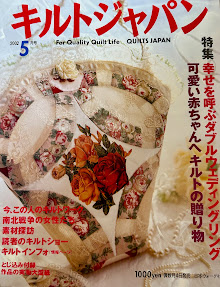 It was a minus 2.8 low tide, which means the water was really far out.
It was a minus 2.8 low tide, which means the water was really far out.Those are the snow-capped Olympic Mountains on the horizon.
 The pictures above and below show the unbelievable variety of living things attached to the bottom of this rock, which is only about the size of our heads. It's like a whole universe under one rock. Joyce discovered it as she was gently tilting back rocks to see what we could find. After we looked, we carefully put it back in place so the little critters would remain sheltered from the air and sun while the tide was out.
The pictures above and below show the unbelievable variety of living things attached to the bottom of this rock, which is only about the size of our heads. It's like a whole universe under one rock. Joyce discovered it as she was gently tilting back rocks to see what we could find. After we looked, we carefully put it back in place so the little critters would remain sheltered from the air and sun while the tide was out.There are two baby sea stars (which you may know as starfish, but they're not fish), snails, tiny mussels, barnacles, seaweed, and a variety of soft globs that we haven't identified yet. Several small crabs scuttled away when we lifted the rock.
 Joyce points to an unidentified white soft thing attached to the rock.
Joyce points to an unidentified white soft thing attached to the rock.If you know what it is, let me know.
 Wild life specimen Dave, left, helps set up the awning and tables where naturalists will fill touch tanks with marine specimens (which will be returned to the same intertidal zone where they were found).
Wild life specimen Dave, left, helps set up the awning and tables where naturalists will fill touch tanks with marine specimens (which will be returned to the same intertidal zone where they were found). The mighty SUNFLOWER STAR is a predatory creature that can move pretty fast when chasing down a meal (clams, crabs, urchins, etc.). The largest and fastest sea star in the Puget Sound, sunflower stars can grow up to 3 feet in diameter. This one was about 16 inches wide. They're born with five arms but eventually grow 15 to 24.
The mighty SUNFLOWER STAR is a predatory creature that can move pretty fast when chasing down a meal (clams, crabs, urchins, etc.). The largest and fastest sea star in the Puget Sound, sunflower stars can grow up to 3 feet in diameter. This one was about 16 inches wide. They're born with five arms but eventually grow 15 to 24. Ooey gooey! That big beige coil in the touch tank is a MOON SNAIL, and the rubbery dark gray thing is its egg case, or "sand collar." The moon snail has an enormous feeding foot that protrudes from its shell and surrounds its prey. It uses its raspy tongue to drill a hole in thicker shells to get to the animal inside. When you find an empty shell on the beach with a perfectly round hole near the ligament, it means it fell victim to a moon snail.
Ooey gooey! That big beige coil in the touch tank is a MOON SNAIL, and the rubbery dark gray thing is its egg case, or "sand collar." The moon snail has an enormous feeding foot that protrudes from its shell and surrounds its prey. It uses its raspy tongue to drill a hole in thicker shells to get to the animal inside. When you find an empty shell on the beach with a perfectly round hole near the ligament, it means it fell victim to a moon snail.The snail makes its SAND COLLAR by mixing sand with mucous and depositing about 100,000 eggs between two layers of the sandy mixture. This is formed around its body, then the snail releases the egg case and the eggs hatch in about six weeks.
Kopachuck Beach's sandy areas are filled with SAND DOLLARS like the two above. They can grow to about 5 inches in diameter; these are about 3 inches. Tiny spines on top give them a velvety appearance, and tube feet underneath let them walk and burrow. White sand dollars are actually the exoskeletons ("tests") left when the animal dies. Sand dollars can live for up to 13 years (so please don't step on them).
I'll write more about the worms later; now I'm going for a walk.
In the meantime, please let me know if you've found any errors in this post -- I'm just starting to learn about marine biology.
My April 20 post,
SEA STARS, BARNACLES, SLUGS, OH MY!
has more photos and info. Check it out!
SEA STARS, BARNACLES, SLUGS, OH MY!
has more photos and info. Check it out!














No comments:
Post a Comment